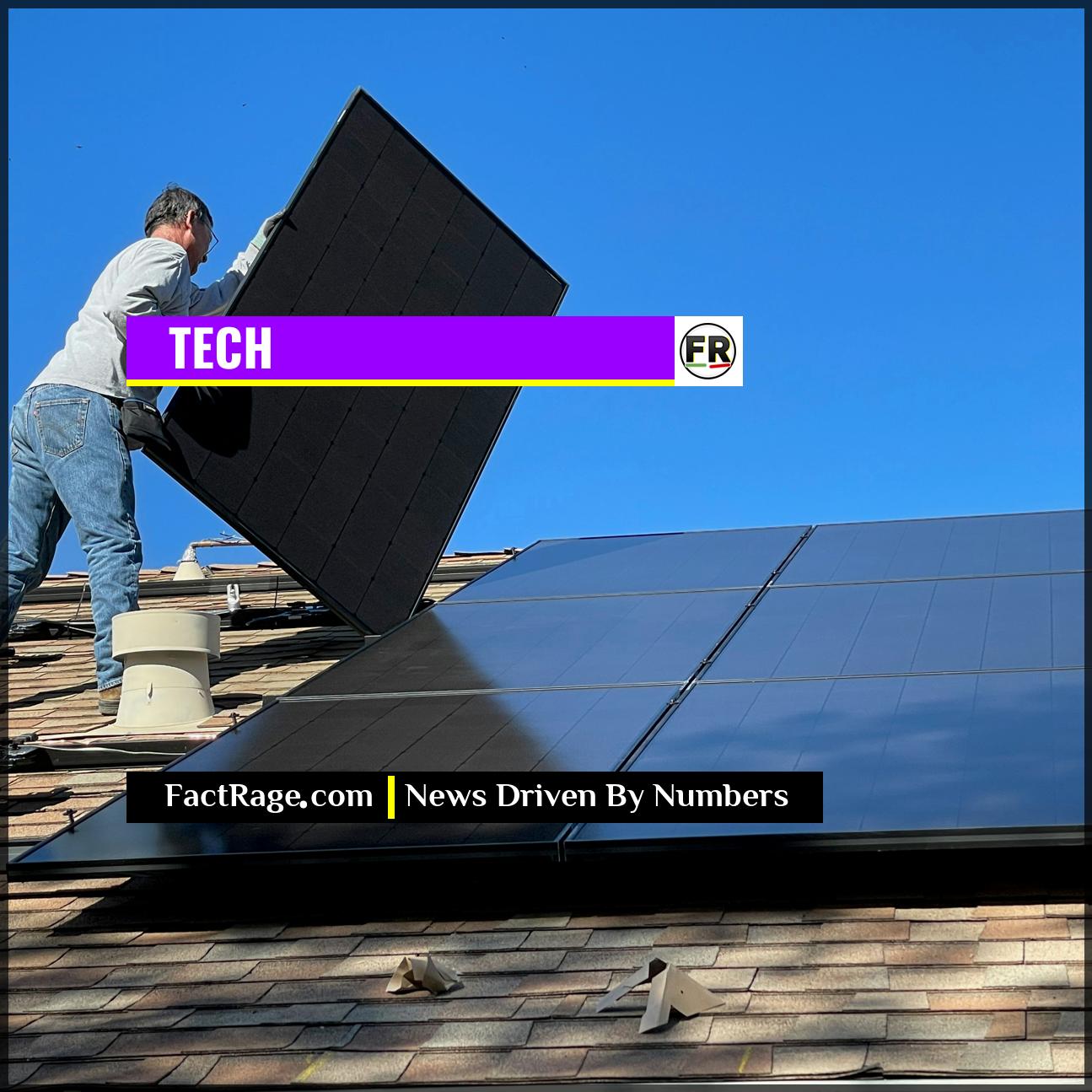NATIONWIDE – Spurred by significant government incentives, solar energy adoption in the United States is surging to record levels, yet questions are emerging within the technology and policy sectors about whether these programs are accelerating a genuine technological revolution or simply subsidizing the mass deployment of an already mature industry.
- Massive Deployment – The Inflation Reduction Act’s 30% tax credit has been a primary driver of record-breaking growth in residential and commercial solar installations since 2022.
- Mature Technology Dominates – The vast majority of subsidized installations—over 95%—utilize conventional crystalline silicon panels, a reliable and cost-effective technology that has been the industry standard for decades.
- Innovation vs. Adoption Debate – A key debate is unfolding over whether broad, technology-agnostic subsidies effectively create a market for next-generation solar tech or if they inadvertently favor established products, potentially slowing the transition to more advanced solutions.
The sight of solar panels on neighborhood rooftops and across vast deserts is becoming increasingly common, a visible sign of a national push toward renewable energy. But beneath the surface of this green expansion lies a complex interplay between government policy, market economics, and the pace of technological innovation.
The Policy-to-Prototype Pipeline
![]() Government incentives have proven remarkably effective at driving the adoption of solar power. But the real measure of long-term success isn’t just about the number of panels installed, but the type of technology they represent. The debate is now shifting from simple adoption to a more complex challenge: ensuring that today’s policy doesn’t just fund the present, but actively pulls the future of solar technology out of the laboratory and into the light.
Government incentives have proven remarkably effective at driving the adoption of solar power. But the real measure of long-term success isn’t just about the number of panels installed, but the type of technology they represent. The debate is now shifting from simple adoption to a more complex challenge: ensuring that today’s policy doesn’t just fund the present, but actively pulls the future of solar technology out of the laboratory and into the light.
Read On…
We break down how current incentives work, which technologies are benefiting, and the growing debate over whether we’re funding true innovation or creating a “technology lock-in.”
How Policy Triggered a Solar Installation Boom

The primary catalyst for the current solar boom is the federal Residential Clean Energy Credit, which was expanded and extended through the 2022 Inflation Reduction Act (IRA). This policy provides homeowners with a tax credit for 30% of the cost of new, qualified clean energy systems, including solar panels and battery storage, with no cap on the value.
The impact has been swift and significant. According to data from the Solar Energy Industries Association (SEIA), the U.S. solar industry has experienced unprecedented growth since the IRA’s passage. This surge has been driven by both residential customers and large-scale utility projects, with major installation companies like Sunrun and Sunnova reporting substantial increases in demand. By the numbers, the policy is an unqualified success, making solar energy more financially accessible and dramatically increasing the nation’s clean energy capacity.
What Kind of Technology Is Actually Being Funded?
While incentives are driving installations, the technology being installed is overwhelmingly conventional. The market is dominated by crystalline silicon (c-Si) solar panels. This technology is a workhorse: it’s reliable, its manufacturing process is scaled globally, and its cost has plummeted over the last two decades. For an incentive structure based on deployment and cost, c-Si is the logical choice.
However, this focus raises a critical question: what about the next generation of solar technology? Researchers are actively developing more advanced and efficient options, including:
- Perovskite Solar Cells: These use a different material structure that promises higher efficiency and lower manufacturing costs, but developers are still working to solve long-term durability challenges.
- Tandem Cells: These layer perovskite materials on top of traditional silicon cells, potentially shattering current efficiency records by capturing more of the light spectrum.
- Cadmium Telluride (CdTe) Thin-Film: Championed by manufacturers like First Solar, this technology offers advantages in high-temperature performance and a lower carbon footprint during manufacturing.
Because these emerging technologies are often at an earlier stage of development or have a higher initial cost, they struggle to compete for the same subsidy dollars that flow easily to mass-produced silicon panels.
A Bridge to the Future or a Crutch for the Present?
The central debate among energy experts is about the long-term effect of these incentive structures. One perspective argues that “market-pull” policies like the 30% tax credit are essential. By creating a massive, stable market for solar, they build out the necessary manufacturing base, train a skilled installation workforce, and achieve economies of scale that ultimately benefit all technologies. Proponents of this view believe that a rising tide lifts all boats; as the overall solar market grows, it creates opportunities for new innovations to enter the supply chain.
The alternative view suggests that relying solely on broad deployment subsidies creates “technology lock-in.” By making the current standard so economically attractive, the incentives may inadvertently erect a barrier to entry for innovative but initially more expensive technologies. This perspective calls for more targeted “technology-push” policies to run in parallel, such as increased R&D funding from the Department of Energy’s Solar Energy Technologies Office (SETO) or production credits specifically for next-generation domestic manufacturing.
Ultimately, the success of the current green energy strategy will be judged on two fronts: the number of panels installed today and whether those installations paved the way for the more efficient, powerful, and sustainable energy technologies required for the future.
Beyond the Rooftop Revolution
![]() The success of today’s solar incentives is now visible on rooftops across the nation—a clear victory for clean energy deployment. The fundamental question, however, is whether we are building a bridge to the future or a monument to the present. Ensuring that policy not only funds the installation of current technology but also pulls future innovations from the laboratory to the marketplace will define the true legacy of this green energy transition.
The success of today’s solar incentives is now visible on rooftops across the nation—a clear victory for clean energy deployment. The fundamental question, however, is whether we are building a bridge to the future or a monument to the present. Ensuring that policy not only funds the installation of current technology but also pulls future innovations from the laboratory to the marketplace will define the true legacy of this green energy transition.













